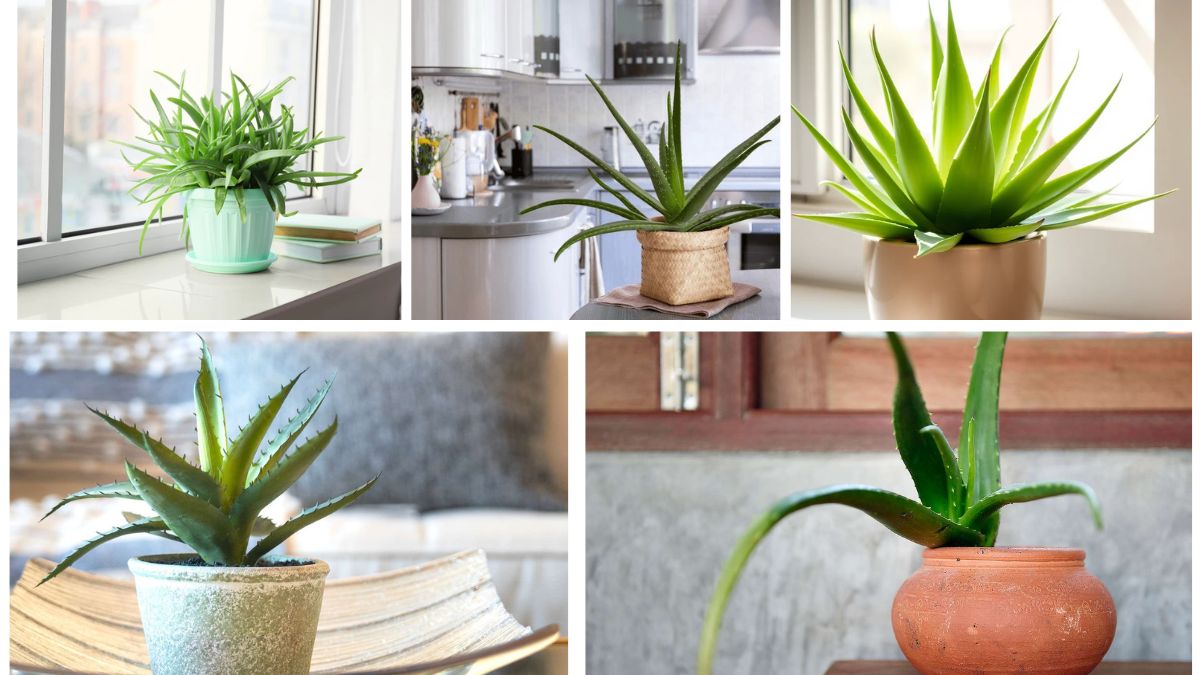Aloe vera has been cherished for centuries as a “plant of immortality.” Beyond its beauty as a houseplant, it serves as a natural healer, air purifier, and low-maintenance companion for homes and gardens. Whether you’re just starting your indoor garden journey or seeking to add a practical plant with multiple benefits, aloe vera is an excellent choice. This guide will walk you through everything you need to know about growing, caring for, and using aloe vera at home.
Why Aloe Vera is Special
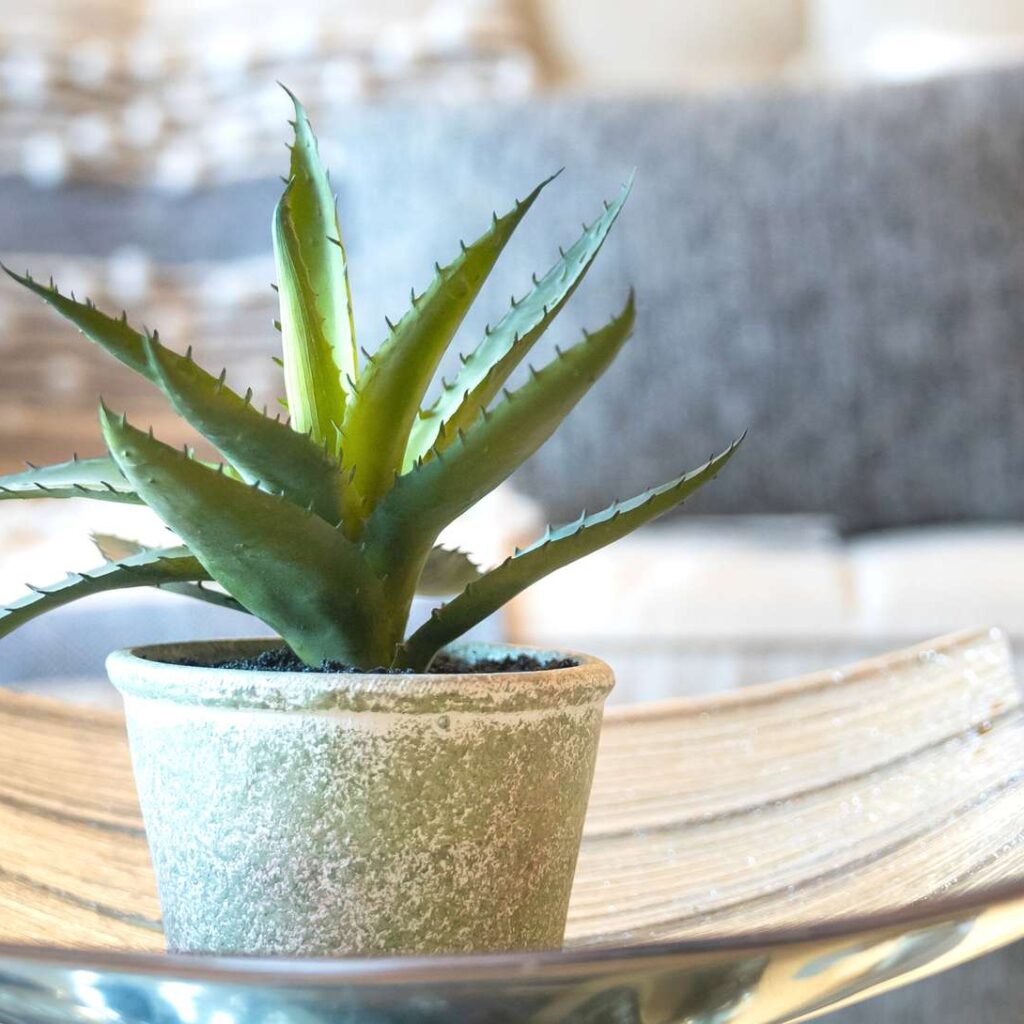
Aloe vera (Aloe barbadensis miller) is a succulent plant known for its thick, fleshy leaves filled with cooling gel. This gel contains vitamins A, C, E, B12, folic acid, and minerals such as calcium, magnesium, and zinc. From treating sunburns to moisturizing skin and even improving indoor air quality, aloe vera is both functional and ornamental.
Its ability to thrive with minimal care makes it a favorite among beginners who want a touch of greenery without the stress of complicated maintenance.
Choosing the Right Aloe Vera Plant
When buying an aloe vera plant, look for these features:
- Plump, firm leaves: Healthy plants have upright, juicy leaves.
- Green color with no brown spots: Avoid plants with discolored or mushy leaves.
- Strong base and root system: Plants should not wobble in their pot.
Many garden centers and nurseries sell mature aloe vera plants, but you can also start from pups (baby shoots that grow near the base of a mother plant). Pups are easy to transplant and grow quickly into independent plants.
Planting Aloe Vera
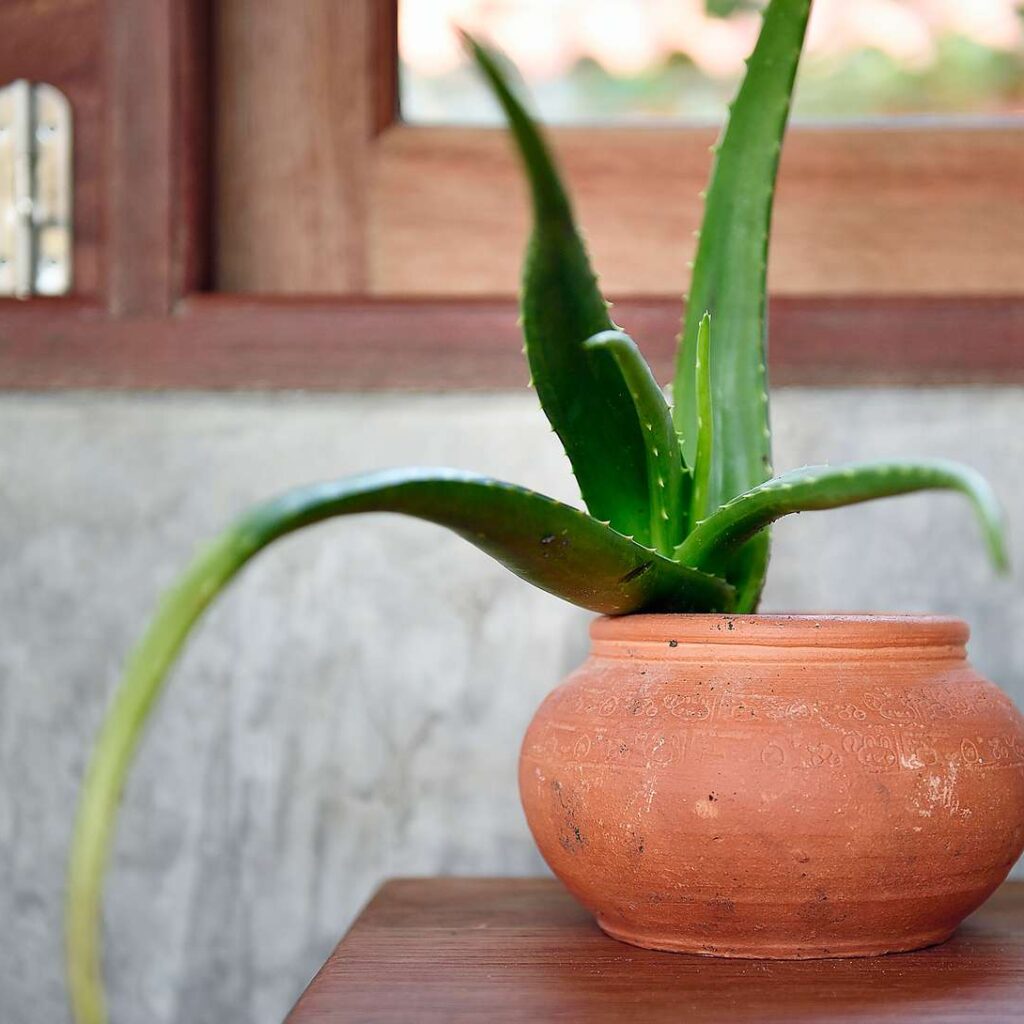
Aloe vera thrives in containers, raised beds, or garden soil, provided the right conditions are met.
1. Choosing the Pot
- Use a terra-cotta or clay pot with drainage holes. These materials allow soil to dry faster, preventing root rot.
- The pot should be slightly larger than the plant’s root ball.
2. Soil Selection
- Aloe vera prefers well-draining soil. A cactus or succulent mix works perfectly.
- You can make your own mix: 2 parts potting soil + 1 part sand or perlite.
3. Planting Steps
- Fill the pot with your soil mix.
- Place the aloe vera plant in the center, ensuring the roots are covered.
- Leave the lower leaves just above the soil surface.
- Water lightly to settle the soil.
Light and Temperature Needs
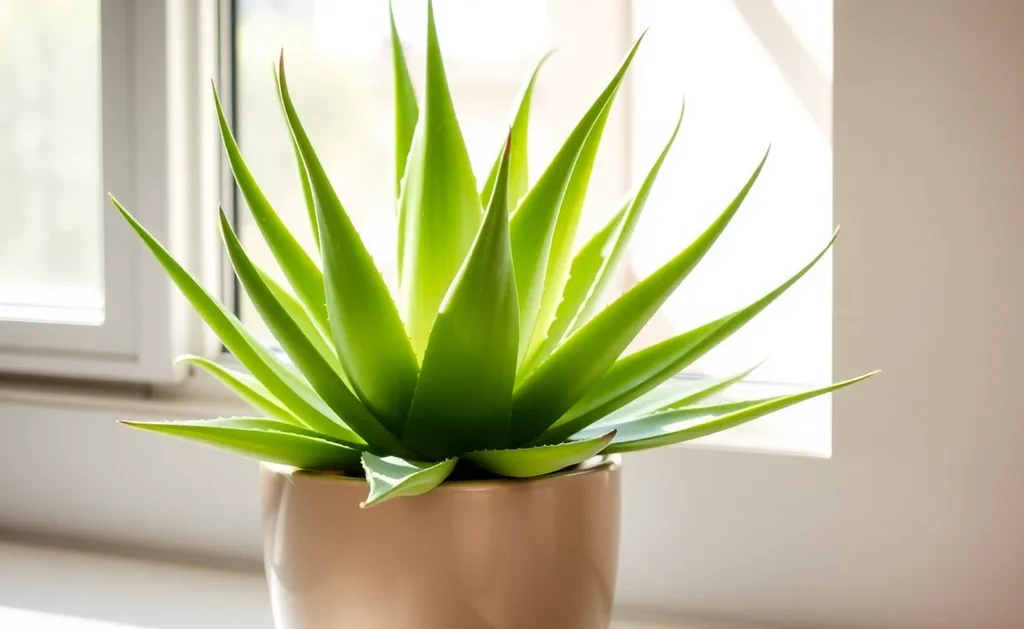
Aloe vera loves bright, indirect sunlight. Place it near a sunny window indoors (south or west-facing is ideal). Outdoors, give it partial to full sunlight, but avoid harsh afternoon rays, which may scorch leaves.
- Light needs: At least 6–8 hours daily.
- Temperature range: 55–80°F (13–27°C).
- Protect from frost and bring the plant indoors during winter in colder regions.
Watering Aloe Vera the Right Way
The most common mistake beginners make is overwatering. Aloe vera stores water in its leaves and needs less frequent watering than typical houseplants.
- Watering rule: “Soak and dry.” Water deeply, then let the soil dry completely before watering again.
- In summer, water every 2–3 weeks.
- In winter, reduce watering to once a month.
Check the soil by sticking your finger 2 inches deep—if it feels dry, it’s time to water.
Fertilizing Aloe Vera
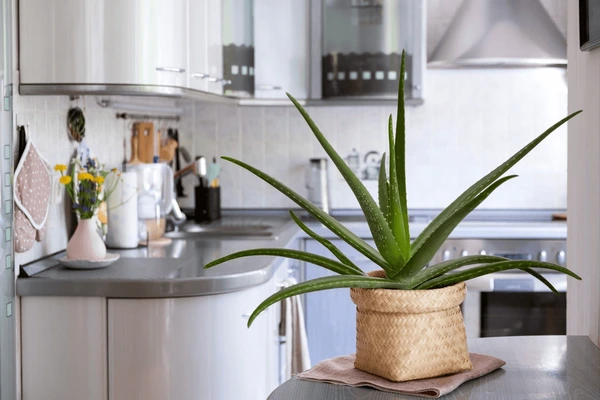
Aloe doesn’t need heavy feeding, but an occasional boost helps it thrive.
- Use a diluted succulent or houseplant fertilizer (10-40-10) once in spring and again in summer.
- Avoid over-fertilizing—it can burn roots and weaken growth.
Repotting and Propagation
Aloe vera grows pups that can be separated and repotted to create new plants.
Repotting Steps:
- Remove the plant from its pot and gently shake off soil.
- Identify pups (small offshoots with roots).
- Detach them carefully from the mother plant.
- Repot pups in small pots with succulent soil.
This process not only multiplies your aloe collection but also prevents overcrowding in the main plant.
Common Problems and Solutions
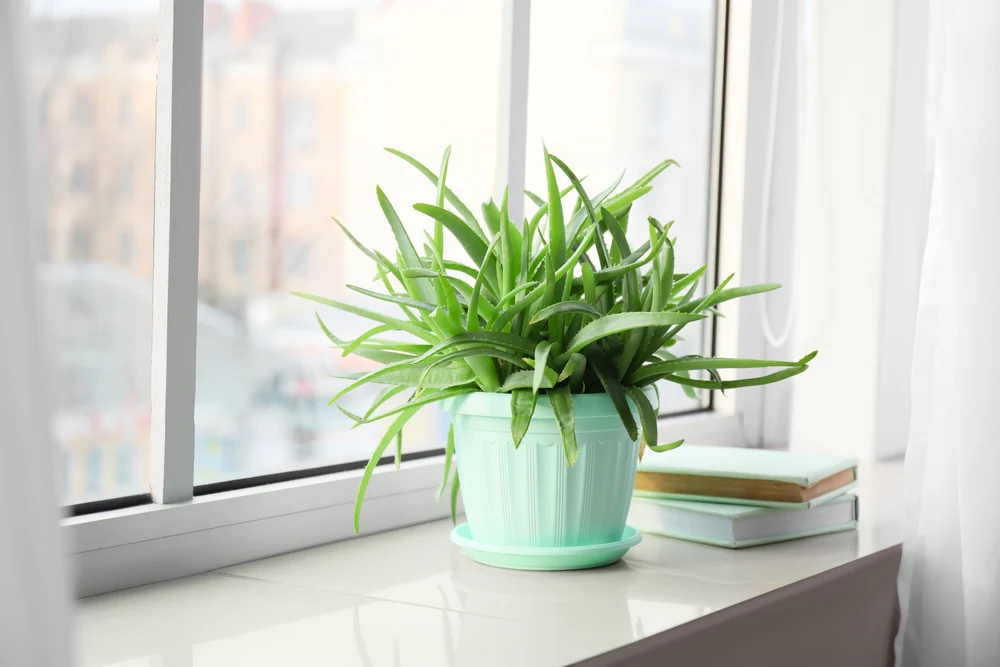
1. Brown or Yellow Leaves
- Cause: Overwatering or poor drainage.
- Solution: Reduce watering, use well-draining soil, and ensure pot has holes.
2. Leaf Curling
- Cause: Too much direct sun or low watering.
- Solution: Move to bright but indirect sunlight and adjust watering schedule.
3. Pests (Mealybugs, Aphids)
- Cause: Indoor air stagnation or weakened plant.
- Solution: Wipe leaves with neem oil or insecticidal soap.
4. Leggy Growth
- Cause: Insufficient light.
- Solution: Move to a brighter spot.
Benefits of Aloe Vera at Home
Aloe vera isn’t just pretty—it’s practical.
1. Natural First Aid Kit
- Aloe gel soothes burns, cuts, scrapes, and insect bites.
- Its cooling properties make it a natural sunburn reliever.
2. Skin and Hair Care
- Aloe gel hydrates dry skin and reduces acne.
- Used as a natural conditioner, it strengthens hair.
3. Air Purification
NASA’s Clean Air Study listed aloe vera as an air-purifying plant that removes toxins like formaldehyde and benzene.
4. Stress Relief and Aesthetic Appeal
Greenery improves mood and indoor ambiance, making aloe vera a calming presence in homes and offices.
Seasonal Care Tips
- Spring/Summer: Increase watering slightly; fertilize once; watch for pests.
- Fall/Winter: Reduce watering; keep indoors in colder regions; avoid fertilizing.
- Repot every 2–3 years to refresh soil and allow space for root growth.
Harvesting Aloe Vera Safely
If you plan to use aloe vera gel:
- Select a mature outer leaf (at least 8 inches long).
- Cut it close to the base with a clean knife.
- Drain the yellow latex (aloin) that seeps out—it can irritate skin.
- Scoop the clear gel from the inside and use it fresh.
Gel can be stored in the refrigerator for up to a week.
Aloe Vera Myths vs. Facts
- Myth: Aloe vera needs daily watering.
- Fact: Too much water kills the plant—watering once every 2–3 weeks is enough.
- Myth: Aloe vera grows well in low light.
- Fact: It needs bright sunlight to stay healthy.
- Myth: Aloe gel is safe for everyone.
- Fact: While mostly safe, some people may develop skin allergies—do a patch test first.
Conclusion
Aloe vera is the perfect beginner-friendly plant that combines beauty, resilience, and healing power. With minimal care, it grows into a lush green companion, ready to provide fresh gel for first aid, skincare, and hair care needs. Its air-purifying properties and ability to adapt to small or large spaces make it a must-have plant for every home.
By learning how to plant, water, and harvest aloe vera properly, you can enjoy the many benefits of this “healing greenery” all year long. Whether on a sunny windowsill, balcony, or backyard, aloe vera will reward you with fresh growth and natural remedies for years to come.
